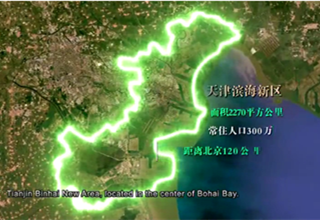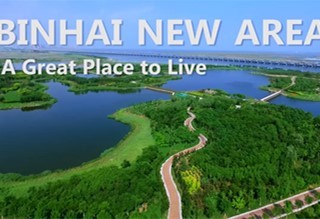Tianjin city: a 615-old jewel of China

Famous Chinese scholar and reformist Liang Qichao [Photo/xinhua]
Tianjin's bond with big names in history
Li Hongzhang, a political heavyweight in the late Qing Dynasty who tried to modernize China and was in charge of its foreign affairs, lived in the northern coastal municipality for three decades. His efforts in introducing Western civilization to China were of far-reaching significance in shaping the city's development.
China's last emperor, Aisin-gioro Pu Yi (1906-1967), wrote in his autobiography From Emperor to Citizen that the most joyful period in his life was spent in Tianjin, where as a young man he was forced to leave the imperial palace in Beijing and found a new life there. He often joined parties and danced at local hotels. His former residence, the Garden of Serenity, remains a major attraction in the city.
Patriotic educators Zhang Boling and Yan Fansun built the Nankai University during the May Fourth Movement in 1919.
Master Hongyi, known as Li Shutong, a master painter, musician, dramatist, calligrapher, seal cutter, poet and a pioneer of new culture in China, was also born in Tianjin.
The oldest active Chinese language newspaper in China, Ta Kung Pao, was also founded in Tianjin in 1902.
Liang Qichao, the foremost intellectual leader who inspired Chinese scholars with his writings and reform movements, spent his last 14 years of his life in the city.
Situated in downtown Tianjin, the European buildings were designed by architects from different countries including the United Kingdom, France, Germany and Spain, with some building materials especially imported.
Many of the buildings were the private residences of celebrities in the political, academic, business and entertainment circles in the first half of the last century. Nowadays they serve as public venues.
Today's Tianjin
Today, Tianjin is the largest port city in North China and was one of the first open coastal cities in China. It serves as a strategic point in the Belt and Road Initiative and the China-Mongolia-Russia Economic Corridor -- and is located at the nearest eastern starting point of the Eurasian Land Bridge.
Many of its local foods are much sought-after on the internet. Famous Tianjin snacks are not just pleasing in appearance; they taste as good as they look. Great delicacies from Tianjin including Jianbing Guozi -- a Chinese crepe -- commend themselves to people due to their sumptuous flavors.
Tianjin is one of the three birthplaces of Chinese crosstalk, along with Tianqiao in Beijing and the Confucius Temple of Nanjing.
In a tea house, a classic scene has actors performing on the stage and their audience sitting and watching while drinking tea and munching sunflower seeds.
Elsewhere, Tianjin's painted clay figurines are famous folk artwork that originated from the Han dynasty (206 BC-AD 220). The figurines from Zhang's families reflect life: people can see the sorrow, joys and frustration in the small clay figure's eyes.
Another great feature of the city is its great schools – as represented by Nankai University and Tianjin University. Education experts say these august halls of learning -- as well as many middle and primary schools with more than a century of history – helped set the precedent for modern Chinese education.

Copyright © Tianjin Municipal Government. All rights reserved. Presented by China Daily



